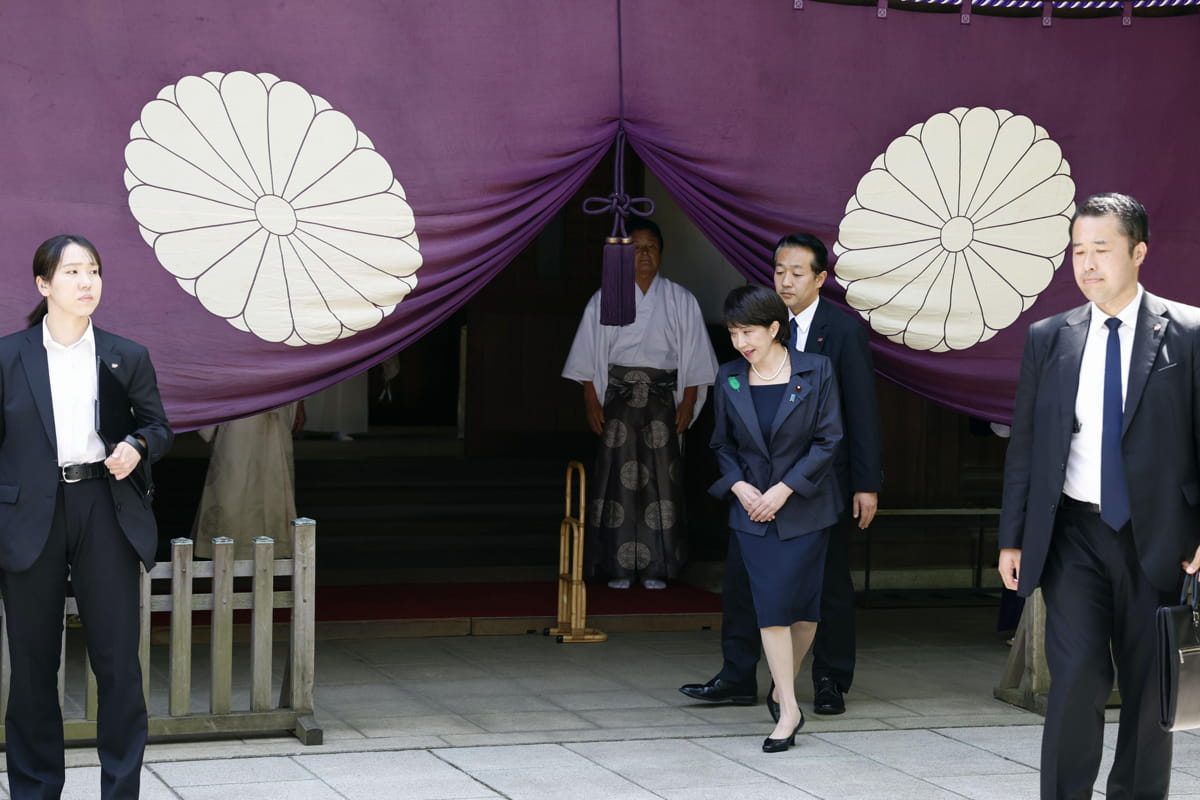Sanae Takaichi is poised to make history as Japan’s first female prime minister. Having lost to Fumio Kishida in 2021 and again to Shigeru Ishiba last year, she emerged victorious on her third attempt in the male-dominated contest to lead the ruling Liberal Democratic Party (LDP) on 4 October. As the LDP remains the biggest party in parliament despite substantial losses in the last election, Takaichi is widely expected to be elected prime minister when the parliament meets on 15 October.
Takaichi’s triumph marks a significant milestone in Japanese politics, opening the door for women to reach top political office. Currently, the incumbent cabinet under Ishiba includes only two female ministers, and women make up just 16% of parliament. Takaichi has pledged to improve gender balance in her cabinet to “Nordic levels”, and introduce family-friendly policies such as partial tax deductions for babysitting fees and corporate tax breaks for companies that provide in-house childcare.
Takaichi’s hawkish, nationalist convictions could put thawing regional ties under renewed strain.
While Takaichi’s victory is lauded across the globe as shattering “the ultimate glass ceiling”, she is not the feminist figure that one might expect. A protégé of the politically-conservative late prime minister Shinzo Abe, she has a reputation for being even more “hard-line [and] ultra-conservative”, and has been described as “hostile” towards gender issues. Some of the legal changes she has opposed include allowing married couples to keep separate surnames and permitting women to ascend the Chrysanthemum Throne in Japan, citing the preservation of family values and Japanese traditions, despite strong public support for these reforms.
Although Takaichi appears to have softened her tone on gender issues recently, there is little indication that she will move away from LDP’s conservative gender stance. She will likely pursue initiatives in the style of her mentor Abe’s “Womenomics”, which promoted women’s economic participation in response to Japan’s demographic crisis but stopped short of genuine reforms that address systemic gender bias limiting women’s career advancement and perpetuating the wage gap.

Sanae Takaichi makes regular visits to the controversial Yasukuni shrine in Tokyo (Kyodo News via Getty Images)
Becoming prime minister is just the first of the uphill battles Takaichi will have to face. Her ascent to the Kantei comes amid an atmosphere of political uncertainty in Japan – which appears to be returning to the era of “revolving-door” leadership in the 1990s and 2000s, when prime ministers were replaced nearly every year. She will have to overcome at least three major challenges that plagued her two predecessors.
At the top of her to-do list are urgent economic reforms aimed at rejuvenating the Japanese economy, managing the massive national debt, and curbing inflation. Everyday concerns such as rising living costs, a weaker yen, and declining real wages have fuelled public frustration with the government. At the same time, anti-immigrant sentiment has been on the rise, exemplified by the growing influence of the Shinseito Party with a “Japanese First” slogan inspired by MAGA-style politics. Takaichi, like other presidential hopefuls, adopted a hard-line tone on foreigners during her campaign. In a key speech, she criticised tourists for deer-kicking in Nara Park and for hanging from torii gates like gymnastic bars. As prime minister, however, Takaichi will need to balance her tough stance on immigration with Japan’s reliance on foreign workers, who are crucial for driving economic growth in an aging society.
The selection of Takaichi as party leader signifies the LDP’s desire to win back conservative voters from populist movements, while recognising that a bold new change is necessary for the party’s long-term relevance.
Second, the new Takaichi government faces a rapidly shifting international environment. She will need to prioritise stabilising shaky relations with Japan’s most important ally, the United States, following months of tariff negotiations and tense moments before inking a new deal. US President Donald Trump is expected to visit Japan in October, and hosting a successful visit will be Takaichi’s first test as Japan’s leader. She will likely leverage their mutual regard for Abe, with whom Trump shared a particularly close rapport in his first term, to strengthen the alliance and bolster her diplomatic credibility.
Geopolitical tensions also loom in Japan’s immediate neighbourhood. Ishiba’s foreign policy displayed pragmatism, favouring stable relations with China and improving ties with South Korea. Takaichi’s hawkish, nationalist convictions – including her regular visits to the controversial Yasukuni shrine, denying coercion of comfort women, and an outspoken position on the Dokdo/Takeshima territorial dispute – could put these thawing ties under renewed strain. Following the recent show of unity between China, North Korea and Russia, growing security concerns in Japan could also push Takaichi to adopt a tougher China policy.
Takaichi also has the daunting task of restoring the LDP’s public image and regaining its parliamentary majority. On top of losing voters over economic woes, LDP has struggled with corruption scandals since 2022. The selection of Takaichi as party leader signifies the LDP’s desire to win back conservative voters from populist movements, while recognising that a bold new change is necessary for the party’s long-term relevance. As Japan’s first female prime minister, Takaichi is the face of this “new era” that might invigorate voters. However, she must broaden her popular appeal beyond the LDP’s traditional base before the next major elections, due in October 2028. The pressure is also immense to address the economic issues prioritised by Japanese voters in a short amount of time. If she fails to do so, it could risk reinforcing biases against women in power and undermine the progress on gender equality in Japan.


AloJapan.com